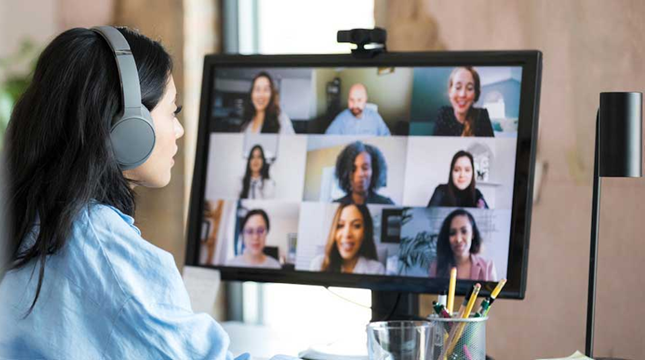If you work in Consumer Packaged Goods (CPG), chances are you conduct research a few times each year. You’re likely interested in understanding your consumers and their preferences, perceptions, and pain points to create the best and most successful products possible.
Often the question arises--how should we do it? Do we embrace the digital age and conduct our research entirely online or opt for traditional methodologies--live and in-person? Each approach has its own benefits and drawbacks, so let’s take a closer look at them.

In-Person Studies Mean Deep Nuanced Insights
Picture this: You're conducting a focus group for a new potential product line in a cozy setting, where participants discuss their flavor and packaging preferences and needs with a group of their peers.
In-person qualitative research offers an unparalleled depth of nuanced insights. This research setting makes it easier for your moderator and participants to build a rapport with one another.
As you observe their body language and facial expressions, you notice one participant scrunching her face at the mention of certain ingredients. Without skipping a beat, your moderator probes further with this respondent, unraveling her concerns and providing valuable development direction for your new product.
The physical presence of a moderator in the research environment yields a deeper, firsthand understanding of how people behave, respond to ideas, and interact with products. In the in-person session, products can be physically touched, smelled, and tasted in a controlled manner. This tactile experience is invaluable, especially for items where sensory elements play a crucial role in consumer preferences.
In-person Studies Come at a Bigger Cost
Those rich, in-person insights often come at a premium cost in both time, budget, and resources. When gathering your development and insights teams at a central location, costs can quickly begin to add up. Coordinating internal schedules, finding available facilities, and arranging for products can drag out a timeline or prevent the participation of crucial collaborators which can affect your development goals.
Additionally, if you are looking for feedback from a diverse population, you may need to spend multiple days in one location or travel to capture research targets--all activities which add costs and inflict timeline strains.
Respondent dynamics is another complexity to consider. During face-to-face interactions, participants could feel pressured to provide more socially desirable responses, especially if research topics or products are sensitive. This can lead to incomplete or skewed feedback that does not accurately reflect their true preferences or behaviors.
Online Studies are Convenient and Cost-effective
Online qualitative research offers convenience and cost-effectiveness. Imagine hosting virtual focus groups where participants join from comfortable settings while your development, insights, and research teams observe from their desks or home offices. With the click of a few buttons, you can collect valuable feedback on product prototypes, packaging designs, and marketing slogans in a secure online environment designed specifically for consumer research.

Nearly anyone with online access can become a qualified participant in an online study, to an extent. With online research, you can typically access a broader demographic who might find it challenging to attend in-person sessions.
Online platforms can provide participants with a sense of anonymity, encouraging them to express their honest opinions without fear of judgment. This often leads to more candid responses, shedding light on genuine consumer perceptions and behaviors.
But Online Research has Limitations
Online research isn't without its drawbacks. Technical difficulties can disrupt the flow of conversations, hindering genuine interactions. Participants may have varying levels of technical ability or system capabilities. Technical difficulties in a research interview or focus group can leave everyone confused or frustrated. These interruptions not only impede data collection but can also erode participant engagement and trust.

Online platforms may also lack the intimacy of face-to-face interactions, making it harder to capture the non-verbal cues and body language essential for understanding emotions and reactions. Despite your best efforts to foster a comfortable atmosphere, this digital barrier can still inhibit candid disclosures and genuine dialogue. During a video interview, subtle facial expressions or gestures may not be easily discernible. It can be harder to establish trust with consumers in a virtual setting, especially with sensitive topics.
While it is true that you can reach a larger pool of people with online research, you may also face limitations in sampling and representation with online qualitative research, particularly if your target population is less likely to have access to online platforms. Some groups risk being underrepresented in online studies, potentially skewing your results.
Determining Which Method is Right For You
The choice between online and in-person qualitative research ultimately hinges on your research objectives, target audience, and resource constraints. We love in-person sessions for their depth and intimacy, and online methodologies for their accessibility and scalability. By carefully weighing the options, you can unlock a holistic understanding of consumer preferences and drive informed decisions that help to create great products.
Whether in-person or online, the team at MDRG is here to help with all your CPG research needs.
Our team of qualitative researchers have years of experience working with consumer goods and are ready to jump in.
Contact MDRG today to kick off the conversation and start growing your business!
Are you eager to stay ahead of the curve in your industry? Sign up for our monthly insights email and gain exclusive access to valuable market research, industry trends, and actionable recommendations delivered directly to your inbox.
Topics from this blog: CPG Market Research Market Research Qualitative Research